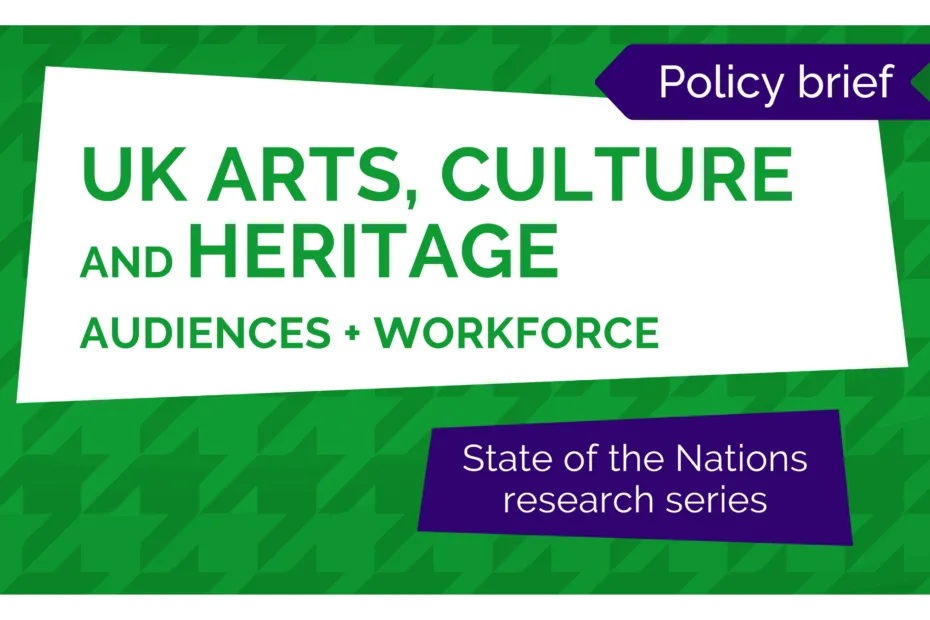This policy brief is based on research from Creative PEC’s State of the Nations Report, Arts, Culture and Heritage: Audiences and Workforce,which uses data from the DCMS Participation Survey, Labour Force Survey and Census 2021, to provide a comprehensive analysis of audiences and workforce. The insights shed light on where progress has been made on inclusion, and where significant inequalities and barriers still exist that require policy intervention
Key Findings:
Cultural engagement is high but uneven across the UK:
- 90% of people in England engage with the arts, with similar trends in other nations.
- Significant differences exist in participation based on gender, ethnicity, and disability status.
- Women and white people tend to engage more in specific cultural activities compared to men and ethnic minorities.
Post-pandemic cultural engagement:
- In-person cultural event attendance has rebounded strongly.
- Outdoor heritage site visits and cinema attendance remain below pre-pandemic levels.
- Digital cultural engagement has not significantly increased post-pandemic.
Workforce demographics:
- 90% of ACH workers are white (compared to 85% in the general workforce).
- 60% of ACH workers come from managerial or professional households (compared to 43% in the general workforce).
- Women hold only 34% of managerial roles but dominate junior positions.
- LGBTQIA+ individuals are better represented in the ACH workforce than in the general workforce.
Geographical concentration:
- London dominates ACH employment, with boroughs like Hackney, Islington, and Camden leading.
- Brighton and Hove has the highest concentration of ACH workers outside London.
- Belfast and Cardiff are regional hubs in Northern Ireland and Wales, respectively.
Policy Implications:
1) Embed equality, diversity, and inclusion (EDI) targets in all place-based ACH interventions at national, regional, and local levels.
2) Implement robust monitoring and evaluation in policies addressing inequalities, using novel data sources and collection mechanisms.
3) Use existing ‘what works’ research more effectively, including:
- Creative PEC’s Good Work Review
- The Creative Diversity All Party Parliamentary Group’s Creative Majority report
- The House of Lords’ At risk: our creative future report
4) Improve data collection on EDI within official datasets:
- DCMS and ONS should explore ways to increase EDI data in existing surveys.
- Consider oversampling minority groups for more statistically robust analysis.
- Explore non-standard datasets, such as credit card purchase data for cultural events.
- Investigate possibilities for accessing private sector data (e.g., Netflix, Spotify) to inform policies on evolving cultural practices.
The report underscores the need for significant policy interventions to address longstanding inequalities in ACH audiences and workforces. By focusing on improved data collection, analysis, and evidence-based policymaking, the sector can work towards greater inclusivity and representation across the UK’s diverse communities.
For more detailed information and to explore interactive dashboards with local data on cultural occupations, read the full UK Arts, Culture and Heritage Audiences and Workforce report.
